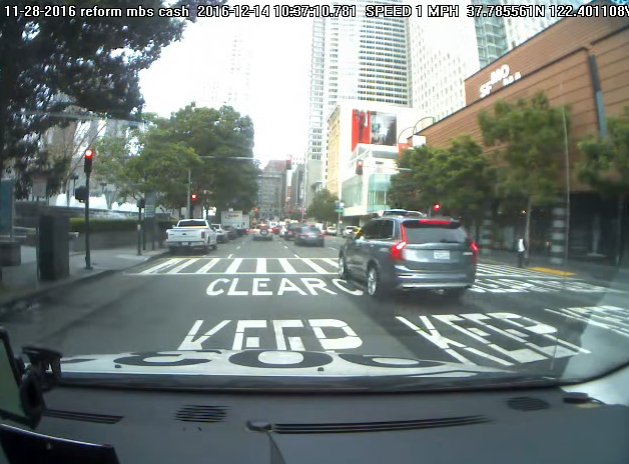
Uber self-driving vehicle appears to plow through red light on first day of launch.
Uber expands self-driving car service to a second city
Uber users in San Francisco can now get rides from cars without drivers — sort of.
The car-sharing service will begin matching a small number of riders with vehicles that rely on Uber’s self-driving technology rather than human drivers, the company announced Wednesday. Those vehicles will still have a safety driver on board who can take control if necessary, as well as a company engineer.
The expansion makes San Francisco the second city in the country to officially test Uber’s service, which the company has said will be critical to the future of both ride sharing and urban transportation. Uber first deployed self-driving vehicles in Pittsburgh three months ago.
“With its challenging roads and often varied weather, Pittsburgh provided a wide array of experiences. San Francisco comes with its own nuances including more bikes on the road, high traffic density and narrow lanes,” Anthony Levandowski, head of the advanced technology group, wrote in a blog post.
The rollout in San Francisco will start small with just a handful of self-driving vehicles, and gradually scale up as more cars become available, a spokeswoman said. Uber has a partnership with Volvo to provide the company’s self-driving vehicles, including the newly released XC90, which comes equipped with a system of lasers and cameras for guidance.
Only users with a credit card tied to a San Francisco address will be eligible for the program, ruling out most tourists and others merely passing through the Bay Area. Those who are matched with a self-driving car will receive an alert that allows them to learn more about the program or opt out, a spokeswoman said.
The San Francisco launch comes with challenges beyond the new terrain. California regulators require companies that test autonomous vehicles to secure a special permit and clear additional hurdles before taking to the road.
Uber declined to obtain a permit on the grounds that its cars require human monitoring and thus do not meet the state’s definition of an autonomous vehicle. California regulators may not agree with that assessment, the company acknowledged Wednesday.
“Most states see the potential benefits, especially when it comes to road safety. And several cities and states have recognized that complex rules and requirements could have the unintended consequence of slowing innovation,” Levandowski wrote on the blog.
In response to questions about Uber’s self-driving car service in San Francisco, the California Department of Motor Vehicles wrote: “We have a permitting process in place to ensure public safety as this technology is being tested. Twenty manufacturers have already obtained permits to test hundreds of cars on California roads. Uber shall do the same.”
Uber is the second Silicon Valley company to make self-driving car news this week. Google announced Tuesday that its self-driving car project would be spun off into a separate company, called Waymo. The move is a sign that the company intends to bring the technology to market, though an exact timeline remains unclear.
(c) 2016, The Washington Post · Steven Overly

